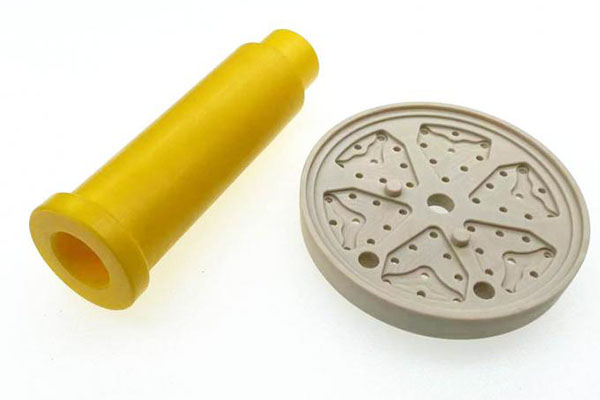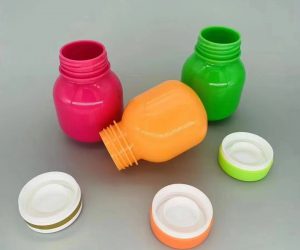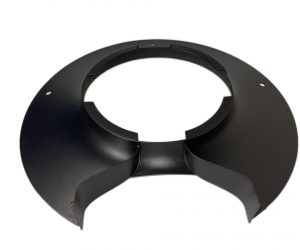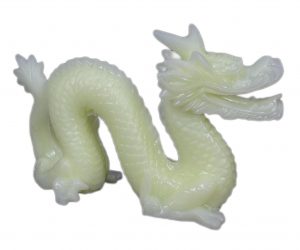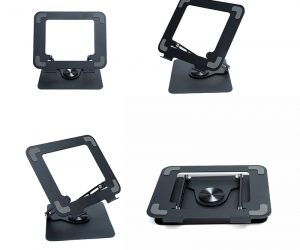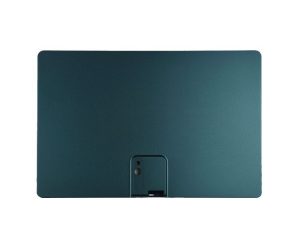1. Introduction
In the ever - evolving landscape of the medical industry, the role of plastic injection molding in medical device manufacturing has become nothing short of pivotal. As healthcare technologies advance at a breakneck pace, the demand for high - quality, reliable, and cost - effective medical devices has surged. Medical device plastic injection molding serves as the linchpin that enables the production of a vast array of components and devices that are integral to modern healthcare.
In the following sections, Yigu Technology will take a deep - dive into the world of medical device plastic injection molding. We will explore how the process works, its numerous advantages, the materials and techniques commonly used, the considerations and challenges faced during production, and best practices for success. By the end of this guide, medical manufacturers will have a comprehensive understanding of medical device plastic injection molding and be better equipped to make informed decisions in their manufacturing processes.
2. How Medical Device Plastic Injection Molding Works
2.1 The Injection Molding Machine
The injection molding machine is the workhorse of the medical device plastic injection molding process, and its main components - the hopper, barrel, and mold - each play a crucial and distinct role.
The hopper is the starting point of the journey for plastic materials. It is a container, usually with a funnel - like shape, that holds the plastic pellets or granules. These pellets are gravity - fed into the barrel of the injection molding machine. For Yigu Technology example, in the production of medical syringes, large quantities of polyethylene (PE) pellets are stored in the hopper. The hopper's design often includes features to prevent bridging or jamming of the pellets, ensuring a continuous and smooth flow of material into the barrel. The barrel is where the magic of plastic transformation begins. It is a long, cylindrical chamber surrounded by heating elements. Molds for medical applications are typically made from high - grade steels, such as P20 or H13 steel, due to their excellent strength, durability, and machinability.
2.2 The Injection Molding Process Steps
- Feeding: As mentioned earlier, the feeding step involves the plastic pellets being loaded into the hopper. The hopper feeds the pellets into the barrel of the injection molding machine at a controlled rate. This rate is often determined by the size and complexity of the medical device being produced, as well as the capacity of the injection molding machine. For small, intricate medical components like the tips of catheters, a slower and more precise feeding rate may be required to ensure consistent plasticization.
- Plasticization: Once in the barrel, the plastic pellets start to melt. The combination of heat from the heating elements and the mechanical action of the rotating screw causes the plastic to transition from a solid granular state to a molten, flowing state. The screw's rotation compresses and mixes the plastic, ensuring uniform temperature distribution and homogeneity. Different plastics have different melting points and plasticization requirements. For example, Polyetheretherketone (PEEK), a high - performance plastic used in orthopedic implants, has a high melting point of around 343°C and requires careful temperature and screw - speed control during plasticization to maintain its mechanical and chemical properties.
- Injection: After the plastic is fully plasticized, it is ready to be injected into the mold. The screw, which has been rotating to plasticize the material, now acts as a piston. It moves forward with high pressure, typically in the range of 50 - 200 MPa for medical device injection molding, depending on the plastic material and the complexity of the mold. This high - pressure injection forces the molten plastic through the nozzle of the injection molding machine and into the mold cavity. The injection speed is also carefully controlled. For medical devices with thin - walled sections or complex internal geometries, a faster injection speed may be necessary to ensure complete filling of the mold without causing defects. However, too high an injection speed can lead to issues such as air entrapment or excessive shear stress on the plastic, which could affect the material's properties.
- Cooling: Once the mold cavity is filled with molten plastic, the cooling process begins. The cooling system in the mold, consisting of the coolant - filled channels, rapidly extracts heat from the plastic. As the plastic cools, it solidifies and takes on the shape of the mold cavity. The cooling time is a critical parameter and can range from a few seconds to several minutes, depending on the thickness and material of the medical device. For example, a thick - walled medical housing made of polycarbonate (PC) may require a longer cooling time to ensure that it is fully solidified and dimensionally stable before ejection. Cooling too quickly can cause internal stresses in the plastic, leading to warping or cracking, while cooling too slowly reduces production efficiency.
- Ejection: After the plastic has cooled and solidified sufficiently, the mold opens. The ejector system, which can include ejector pins, ejector plates, or other mechanisms, then pushes the finished medical device out of the mold. The ejector pins are strategically placed in the mold to ensure that the part is ejected evenly and without damage. For delicate medical devices like microfluidic chips, special care is taken in the design of the ejector system to prevent any deformation or breakage during ejection. Once ejected, the part may undergo further post - processing steps, such as trimming of excess material (flash), cleaning, and inspection, before it is considered a finished medical device component.
3. Advantages of Plastic Injection Molding for Medical Devices
Plastic injection molding offers a plethora of advantages that make it an indispensable manufacturing process in the medical device industry. These advantages not only contribute to the high - quality production of medical devices but also have a significant impact on cost - effectiveness, functionality, and patient safety.
The following Yigu Technology table summarizes the key advantages of plastic injection molding for medical devices:
| Advantage | Description | Example |
| High - Volume Production Efficiency | Automated process for continuous and rapid production, reducing unit costs | Production of 500,000 disposable syringes in an 8 - hour shift |
| Design Flexibility | Ability to create complex geometries and incorporate multiple features in a single part, with easy mold modification | Microfluidic devices with micrometer - sized channels and medical device housings with integrated features |
| Material Compatibility and Biocompatibility | Wide range of materials available, with the ability to customize through compounding | PEEK for implantable devices, PE and PP for disposable devices |
| Cost - Effectiveness | Low unit costs due to high - volume production, minimized material waste, and fewer secondary operations | Recycling of excess plastic and elimination of runner waste with hot runner systems |
| High Precision and Dimensional Stability | Production of parts with tight tolerances and consistent dimensions, enhanced by advanced mold - making and monitoring techniques | Components for surgical instruments with tolerances within ±0.05 mm |
4. Applications of Plastic Injection Molding in the Medical Field
Plastic injection molding has found extensive applications in the medical field, playing a crucial role in the production of a diverse range of medical devices. Its unique capabilities, such as high - precision manufacturing, material versatility, and cost - effectiveness, make it an ideal choice for manufacturing various medical components.
4.1 Disposable Medical Devices
Disposable medical devices are one of the primary applications of plastic injection molding in the medical industry. Items such as syringes, catheters, needles, valves, and connectors are commonly produced using this method.
For syringes, plastic injection molding offers several key advantages. It allows for the production of syringes with consistent dimensions, ensuring accurate dosage delivery. The high - precision molds can create syringes with tight tolerances, which is essential for medical applications. For Yigu Technology example, the plunger of a syringe must fit precisely within the barrel to ensure smooth and accurate movement during injection. With plastic injection molding, the tolerance between the plunger and the barrel can be maintained within a very small range, typically ±0.01 - 0.03 mm. This level of precision helps to prevent leakage and ensures the reliability of the syringe.
Catheters are another important type of disposable medical device produced by plastic injection molding. Catheters are used for a variety of medical procedures, such as urinary catheterization, intravenous therapy, and angiography. The ability of plastic injection molding to create complex shapes is highly beneficial in catheter production. Catheters often have multiple lumens (channels) and tapered tips, which are critical for their proper function. Injection molding can accurately replicate these complex geometries, with some molds capable of producing catheters with lumens as small as 0.5 - 1 mm in diameter. Additionally, the materials used in catheter injection molding, such as silicone or polyurethane, can be selected for their biocompatibility, flexibility, and durability, ensuring that the catheter can withstand the rigors of use within the body.
The production of disposable medical devices by plastic injection molding also offers significant cost - advantages. Since these devices are used only once and then discarded, the ability to mass - produce them at a low cost is crucial. As mentioned earlier, the high - volume production efficiency of plastic injection molding allows for the production of large quantities of these devices in a short period, reducing the unit cost. Moreover, the use of plastic materials, which are generally less expensive than metals or other materials, further contributes to the cost - effectiveness of these disposable medical devices.
4.2 Implantable Devices
Implantable medical devices, such as pacemakers, stents, artificial joints, and dental implants, have stringent requirements in terms of biocompatibility, corrosion resistance, and mechanical strength. Plastic injection molding plays a vital role in meeting these requirements.
Pacemakers are small, battery - powered devices that are implanted in the chest to regulate the heart's rhythm. The housing of a pacemaker, which protects the internal electronic components, is often made by plastic injection molding. Materials like Polyetheretherketone (PEEK) or Liquid Silicone Rubber (LSR) are used due to their excellent biocompatibility and durability. PEEK, in particular, has high mechanical strength and can withstand the mechanical stresses associated with the body's movements. It also has good chemical resistance, which is important as the pacemaker needs to function properly within the body's complex chemical environment for an extended period, often up to 10 - 15 years.
Stents are another example of implantable devices where plastic injection molding is used. Stents are small, expandable tubes that are inserted into blood vessels to keep them open. They require a high degree of precision in their manufacturing, and plastic injection molding can achieve the necessary tolerances. For Yigu Technology example, the struts of a stent need to be precisely sized and shaped to ensure proper expansion and deployment within the blood vessel. Some stents are made from biodegradable plastics, such as poly - L - lactic acid (PLLA), which are designed to gradually break down and be absorbed by the body over time. Plastic injection molding allows for the precise control of the material's thickness and structure, ensuring the proper degradation rate of the biodegradable stent.
Artificial joints, such as hip and knee replacements, also benefit from plastic injection molding. The components of artificial joints, such as the acetabular cup in a hip replacement, often have complex geometries. Injection molding enables the production of these components with high precision, ensuring a proper fit within the body. The materials used, such as ultra - high - molecular - weight polyethylene (UHMWPE), have excellent wear resistance and biocompatibility. UHMWPE can withstand the repeated mechanical stresses of joint movement for many years, providing long - term functionality for the patient.
In summary, plastic injection molding has a wide range of applications in the medical field, from disposable medical devices to implantable devices and surgical instruments. Its ability to meet the specific requirements of each application, in terms of precision, material properties, and cost - effectiveness, makes it an indispensable manufacturing process in the medical device industry.
5. Common Materials Used in Medical Device Plastic Injection Molding
The selection of materials in medical device plastic injection molding is a critical aspect, as it directly impacts the performance, safety, and functionality of the final product. Different medical applications have unique requirements, and the choice of plastic material must be carefully tailored to meet these needs. Here are some of the most common materials used in medical device plastic injection molding, along with their properties, suitable medical scenarios, and relevant standards.
5.1 Polyethylene (PE)
Polyethylene is a widely used polymer in medical device manufacturing due to its favorable properties and cost - effectiveness. It is a thermoplastic material that comes in different densities, such as low - density polyethylene (LDPE) and high - density polyethylene (HDPE).
Suitable Medical Scenarios:
- Disposable Syringes: The barrel and plunger of many disposable syringes are made of PE. Its smooth surface and good dimensional stability ensure accurate dosage delivery, while its biocompatibility and low cost make it an ideal choice for single - use applications.
- IV Tubing and Bags: As mentioned earlier, the flexibility and chemical resistance of PE make it perfect for IV tubing, which needs to be flexible to allow for patient movement during infusion. PE - based bags are also commonly used to store and dispense IV fluids due to their impermeability and resistance to the fluids' components.
5.2 Polypropylene (PP)
Polypropylene is another thermoplastic polymer with distinct properties that make it suitable for various medical applications.
Suitable Medical Scenarios:
- Surgical Instruments: As mentioned, the high stiffness and heat resistance of PP make it an excellent choice for surgical instrument components such as handles, trays, and some reusable parts. For example, laparoscopic instrument handles are often made of PP, providing a lightweight yet durable option for surgeons.
- Implantable Devices (in some cases): In certain implantable devices where a lower - cost, biocompatible material with moderate mechanical properties is required, PP may be used. For instance, some non - load - bearing implantable components or temporary implants can be made of PP due to its biocompatibility and ability to withstand the body's environment for a limited period.
- Containers and Closures: PP is commonly used for medical containers, such as specimen containers and medicine vials, as well as their closures. Its chemical resistance and ability to form a tight seal ensure the integrity and safety of the contents.
5.3 Polycarbonate (PC)
Polycarbonate is a high - performance thermoplastic known for its excellent optical and mechanical properties.
Suitable Medical Scenarios:
- Lenses and Optical Components: As mentioned, PC is widely used for lenses in endoscopes, which require high - quality optical properties to provide clear images of the internal body. It is also used in other optical components such as viewfinders in some medical imaging devices.
- Housings and Enclosures: The impact resistance and dimensional stability of PC make it ideal for medical device housings. For example, the housings of portable ultrasound machines are often made of PC to protect the sensitive internal electronics from damage during transportation and use.
- Connectors and Valves: PC's dimensional stability ensures that connectors and valves fit precisely, preventing leaks and ensuring proper fluid or gas flow in medical devices such as infusion pumps and respiratory equipment.
5.4 Polyvinyl Chloride (PVC)
Polyvinyl Chloride is a versatile plastic with a wide range of applications in the medical field, although its use has been subject to some scrutiny due to environmental and potential health concerns related to plasticizers.
Suitable Medical Scenarios:
- Blood Bags: The flexibility and biocompatibility (when properly formulated) of PVC make it a common material for blood bags. The material can hold blood and its components without reacting with them, and its flexibility allows for easy handling during blood collection, storage, and transfusion.
- Catheters and Tubing: PVC is widely used for catheters and various types of tubing in medical equipment. For example, urinary catheters made of PVC are flexible enough to be inserted comfortably into the patient while maintaining their shape and integrity during use.
- Masks and Gowns: In some disposable medical masks and gowns, PVC may be used in certain layers or components due to its durability and ability to provide a barrier against fluids.
5.5 Acrylonitrile Butadiene Styrene (ABS)
Acrylonitrile Butadiene Styrene is a terpolymer with a combination of properties that make it useful in medical device manufacturing.
Suitable Medical Scenarios:
- Housings and Handles: As mentioned, the toughness and ease of molding of ABS make it ideal for medical device housings, such as those of diagnostic equipment and some surgical instruments. The handles of surgical instruments made of ABS can provide a comfortable grip for the user while being durable enough to withstand repeated use.
- Trays and Enclosures: ABS is also used for trays in medical laboratories to hold samples and equipment. Its chemical resistance ensures that it does not react with the substances in the samples, and its toughness protects the samples from damage. In some cases, ABS is used for enclosures that protect sensitive medical components from the external environment.
The following Yigu Technology table summarizes the key properties, suitable medical scenarios, and relevant standards for these common materials:
| Material | Properties | Suitable Medical Scenarios | Relevant Standards |
| Polyethylene (PE) | Good chemical resistance, flexibility, biocompatibility | Disposable syringes, IV tubing and bags | ISO 10993 - 1, FDA regulations |
| Polypropylene (PP) | High stiffness and strength, heat resistance, good chemical resistance | Surgical instruments, implantable devices (in some cases), containers and closures | ISO 10993 - 1, ISO 11135, ISO 17665 - 1, FDA regulations |
| Polycarbonate (PC) | Transparency, impact resistance, dimensional stability, high - temperature resistance | Lenses and optical components, housings and enclosures, connectors and valves | ISO 10993 - 1, ISO 17665 - 1, ISO 11137 - 1, FDA regulations |
| Polyvinyl Chloride (PVC) | Flexibility, durability, electrical insulation, flame retardancy | Blood bags, catheters and tubing, masks and gowns | ISO 10993 - 1, REACH (EU), FDA regulations |
| Acrylonitrile Butadiene Styrene (ABS) | Toughness and rigidity, good chemical resistance, ease of molding and coloring | Housings and handles, trays and enclosures | ISO 10993 - 1, FDA regulations, CE marking requirements |
6. Common Techniques Used in Medical Device Plastic Injection Molding
6.1 Overmolding
Overmolding is a technique that involves molding a second plastic material over an already - formed component, which can be another plastic part or a non - plastic element such as metal. This process creates a strong bond between the two materials, resulting in a single, integrated product with enhanced functionality.
In the medical device industry, overmolding is often used to add specific features to medical devices. For Yigu Technology example, in the production of surgical instruments, overmolding can be used to create soft - touch grips on the handles. By overmolding a soft elastomeric material, such as thermoplastic elastomer (TPE), over a rigid plastic or metal handle, surgeons can have a more comfortable and secure grip during surgical procedures. This not only improves the ergonomics of the instrument but also reduces the risk of slippage, which could potentially lead to surgical errors.
Another application of overmolding in medical devices is the creation of seals. In devices such as syringes and valves, overmolding can be used to form tight - fitting seals. For instance, a silicone rubber can be overmolded around the plunger of a syringe to create a leak - proof seal, ensuring accurate dosage delivery and preventing contamination of the medical fluid.
Overmolding also offers the advantage of improving the durability and mechanical properties of medical devices. By combining a strong, rigid material with a more flexible or impact - resistant material, the overall strength and performance of the device can be enhanced. For example, in the production of medical device housings, a rigid plastic like polycarbonate can be overmolded with a layer of TPE to provide additional protection against impacts and scratches, extending the lifespan of the device.
6.2 Insert Molding
Insert molding is a technique where a pre - fabricated component, known as an insert, is placed into the mold cavity before the injection of the molten plastic. The plastic then flows around the insert, encapsulating it and forming a single, integrated part once cooled and solidified. The inserts can be made of various materials, such as metal, plastic, or even ceramics.
One of the key advantages of insert molding in medical device manufacturing is the ability to create complex assemblies in a single step. For example, in the production of a medical connector, a metal insert with pre - threaded holes can be inserted into the mold. When the plastic is injected, it bonds with the metal insert, creating a connector with built - in threaded features for easy attachment to other components. This eliminates the need for separate assembly operations, such as screwing in metal inserts after the plastic part has been molded, reducing production time and potential errors.
Insert molding also enhances the mechanical properties of the final product. Metals, for example, are often used as inserts due to their high strength and heat resistance. In a medical device that requires high - temperature sterilization, a metal insert can ensure that the part maintains its integrity during the sterilization process. For instance, in some surgical instruments, metal inserts are used to reinforce critical parts, such as the jaws of forceps, providing the necessary strength and durability for repeated use in surgical procedures.
6.3 Micro Molding
Micro molding is a highly specialized technique used to produce very small and intricate parts with an extremely high level of precision and accuracy. This technique is crucial for the manufacturing of medical devices that require micro - scale components, such as microfluidic channels, sensors, and drug delivery systems.
In the production of microfluidic devices, which are used for various diagnostic and therapeutic applications, micro molding enables the creation of channels with dimensions in the micrometer range. These channels are designed to precisely control the flow of small volumes of biological samples or drugs. For example, in a point - of - care diagnostic device, microfluidic channels can be molded to direct a tiny blood sample to different reaction chambers for analysis. The ability to produce these channels with tight tolerances, often within ±1 - 5 micrometers, ensures accurate and reliable results.
Micro molding is also essential for the manufacturing of micro - sized sensors used in medical devices. These sensors can detect various parameters, such as temperature, pressure, or the presence of specific biomolecules. By using micro molding techniques, the sensor components can be precisely fabricated, allowing for high - sensitivity and accurate measurements. For instance, a micro - temperature sensor in an implantable medical device needs to be extremely small and accurate to monitor the body's internal temperature effectively.
6.4 Cleanroom Molding
Cleanroom molding is a technique that involves carrying out the plastic injection molding process in a controlled environment, known as a cleanroom. Cleanrooms are designed to minimize the presence of contaminants, such as dust, particles, and microbes, in the air, on surfaces, and in the manufacturing process itself.
For the production of sterile or implantable medical devices, cleanroom molding is of utmost importance. Implantable devices, such as pacemakers, artificial joints, and stents, must be free from any contaminants to prevent infections and ensure their proper functioning within the body. By molding these devices in a cleanroom, the risk of contamination during the manufacturing process is significantly reduced.
The air in a cleanroom is filtered through high - efficiency particulate air (HEPA) filters, which can remove particles as small as 0.3 micrometers with a high degree of efficiency. The temperature, humidity, and air pressure in the cleanroom are also carefully controlled. For example, the temperature in a cleanroom for medical device molding may be maintained at around 22 - 24°C, and the relative humidity at 40 - 60% to create an optimal environment for the molding process and to prevent the growth of microorganisms.
The following Yigu Technology table summarizes the common techniques used in medical device plastic injection molding:
| Technique | Description | Medical Applications | Key Considerations |
| Overmolding | Molding a second plastic material over an existing component | Adding soft - touch grips to surgical instruments, creating seals in syringes | Material compatibility between the two plastics, proper mold design for adhesion |
| Insert Molding | Placing a pre - fabricated insert in the mold before plastic injection | Creating complex assemblies like medical connectors, reinforcing parts in surgical instruments | Insert material selection, ensuring proper alignment of the insert in the mold |
| Micro Molding | Producing small and intricate parts with high precision | Manufacturing microfluidic channels, micro - sensors, drug delivery components | Specialized equipment, material flow properties, mold design for small parts |
| Cleanroom Molding | Carrying out injection molding in a controlled, low - contamination environment | Producing sterile and implantable medical devices | Air quality control, personnel and equipment protocols, material handling |
9. Conclusion
In conclusion, medical device plastic injection molding is a cornerstone technology in the medical device manufacturing industry, with far - reaching implications for healthcare worldwide.
The advantages of this process are manifold. It offers high - volume production efficiency, enabling manufacturers to meet the burgeoning global demand for medical devices in a cost - effective manner. The design flexibility allows for the creation of highly complex and customized medical components, driving innovation in medical device design. The wide range of biocompatible materials available for injection molding ensures the safety and functionality of medical devices, whether they are disposable, implantable, or surgical instruments. The high precision and dimensional stability of the process guarantee the reliable performance of medical devices, which is crucial for patient safety and treatment effectiveness.
FAQs
1. What are the key factors to consider when choosing a plastic material for medical device injection molding?
Key factors include biocompatibility, sterilization resistance, mechanical properties (such as strength and flexibility), chemical resistance, and cost - effectiveness. The material must also meet relevant regulatory standards for the specific medical application. For example, for implantable devices, biocompatibility and long - term durability are of utmost importance, while for disposable devices, cost - effectiveness and ease of sterilization may be more critical.
2. How can I ensure regulatory compliance in medical device plastic injection molding?
To ensure regulatory compliance, maintain detailed documentation of the entire manufacturing process, from material sourcing to final product testing. Conduct thorough biocompatibility assessments and sterilization validations as required by regulatory bodies such as the FDA, ISO, and CE. Implement strict traceability systems to track the origin and movement of raw materials and finished products. Regularly update and review your manufacturing processes to align with any changes in regulatory requirements.
3. What are the common defects in medical device plastic injection molding and how can they be avoided?
Common defects include short shots (incomplete filling of the mold), flash (excess material around the edges), warping (distortion of the part), and sink marks (indentations on the surface). To avoid these, optimize the injection molding process parameters such as temperature, pressure, and injection speed. Ensure proper mold design, including adequate venting to prevent air entrapment and proper cooling channels to control the cooling rate. Use high - quality materials and maintain the injection molding equipment regularly to prevent malfunctions that could lead to defects.
